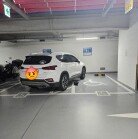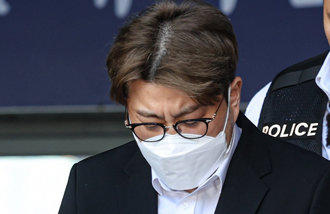[Opinion] A New Luxury City
Luxury purses, luxury cell phones, luxury savings accounts for womenthese days, everything seems to need the label luxury to get consumers attention. In an upscale outlet that opened in Yeoju County, Gyeonggi Province on May 1, it took over an hour to simply enter after more than 50,000 people flocked to it. This reveals consumers excessive loyalty to certain brands and their still insatiable appetite for luxury goods.
The consumer base for luxury goods is expanding to males and those in their teens and twenties. Companies are busy pursuing noble and luxury marketing.
Houses are no exception to this craze for luxury goods. With the rapid increase of demand for upscale housing, all eyes are now on luxury housing complexes for only 20 households or less, or leisure-purpose villas, neither of which are subject to any regulation on sale prices. On the other hand, reconstruction projects are still strongly restricted in the affluent southern parts of Seoul where there is strong demand for upscale housing. Reconstruction projects in those areas will provide only about 12,000 housing units, claims the government, underestimating the potential housing supplies that the projects could offer. Meanwhile, the industry criticizes the government, saying, The number of houses supplied increases exponentially when it raises the floor area ratio (FAR), but the government keeps on making absurd arguments.
The luxury new city recently announced by Governor Kim Mun-soo of Gyeonggi Province is different from what consumers believe constitutes luxury goods. Given the features of the city cited by Gyeonggi Provincea beautiful city, a city with lots of things to enjoy, a city based on cutting-edge knowledge, and a city with towns linking schools and the communityit is more of an environmentally friendly, self-sufficient city. Furthermore, it remains unclear when Kims plan to push for constructing one new luxury city a year will actually materialize, as the Ministry of Construction and Transportation (MOCT) pledged that after the announcement of the second new city in Dongtan, Hwaseong City, Gyeonggi Province, there will be no more new cities built until the end of President Roh Moo-hyuns term in office.
Under the banner of balanced regional development, the current administration has announced plans to build a total of 27 large-sized new cities, innovative cities, business cities, and administrative cities collectively sized at 108.5 million pyeong (approximately 358.7 million square meters). President Roh cites these projects to gain credit, but it will be the next administration that will actually take care of most of them. In some candidate areas, potential sources of discords were dealt with only barely, and it is only a matter of time before these conflicts eventually take place. While pursuing new city development projects, the government encouraged speculative investment and ending up turning some of the candidate areas toward ruin in just a few months. All this reminds us of the possible aftermath of the governments reckless efforts to keep housing prices in check by simply restraining demandinstead of providing quality housings that meet the public demand and developing high-value luxury citiesand to push for balanced development for the sole sake of showing off.
Hong Gwon-hee, Editorial Writer, konihong@donga.com
Headline News
- 55%of SNU Hospital professors start indefinite suspension from today
- DP intends to complete the composition of National Assembly this week
- Too high bonus for head of reconstruction associations causes controversy
- 13 infectious diseases sharply increase across the world
- International Skating Union revises major rules







